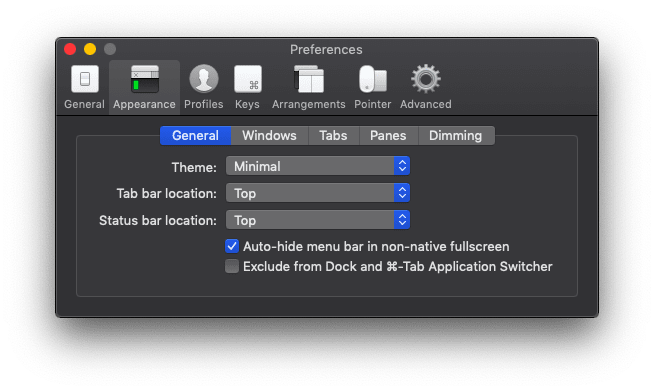
- #ITERM2 OPEN TAB IN SAME DIRECTORY HOW TO#
- #ITERM2 OPEN TAB IN SAME DIRECTORY INSTALL#
- #ITERM2 OPEN TAB IN SAME DIRECTORY UPDATE#
- #ITERM2 OPEN TAB IN SAME DIRECTORY MAC#
I have virtualenv and virtualenvwrapper installed.
#ITERM2 OPEN TAB IN SAME DIRECTORY UPDATE#
# brew update & brew outdated & brew upgrade alias buou="brew update & brew outdated & brew upgrade & brew cleanup" # npm outdated -g -depth=0 & npm update -g alias npmou="npm outdated -g -depth=0 & npm update -g" zshaddhistory() zshaddhistory Creating aliasesĪs I showed before with buou, you can add your own alias to. Adding the following to zshrc prevent ll ls la cd man scp vim nvim less ping open file which whois drill uname md5sum traceroute commands in the command history. You may not want common commands in the command history. # This won't work $ cd ~ # This will work because there is a space before the command $ cd ~ This removes command lines from the history list when the first character on the line is a space. In order to remove commands from your history list, you add the following to your. # shows all command history $ history # shows first 10 commands $ history | head # shows last 10 commands $ hisotry | tail # shows less history $ history | less # Use grep to search your command history $ history | grep Search-word # Use grep to do a case-insensitive search of your command history $ hisotry | grep -i search-word You can see all your command history using a bash command history. You type j + first few letters of a directory.

zshrc on your terminal or open a new tab.īy changing your directory, autojump records directories. $(brew -prefix)/etc/profile.d/autojump.sh zshrc file: # no comma between plugins required plugins=(git autojump)Īdd the following to the end of ~/.zshrc (Intel x86_64 or arm64): &. To use it, add autojump to the plugins array in your.
#ITERM2 OPEN TAB IN SAME DIRECTORY INSTALL#
$ brew install autojump # or for port user $ port install autojump
#ITERM2 OPEN TAB IN SAME DIRECTORY MAC#
It works by maintaining a database of the directories you use the most from the command line.įirst, install it on your Mac OS. autojump is a faster way to navigate your filesystem. autojump pluginĪutojump plugin loads the autojump navigation tool. cd -2 changes directory to the second in the directory stack. The current directory is always the "top" of the directory stack. The dirs displays the contents of the directory stack. with the dirs command as you can see in the above image. You can install all packages in this article with a line of code, see this article.
#ITERM2 OPEN TAB IN SAME DIRECTORY HOW TO#

You can also open a new terminal window from links or paths written in a document, web page, email, and other places supported by OS X’s Services feature. If you select file(s), the directory that contains the file(s) will be used. If you select multiple directories, each one will be opened in its own tab. Click it, and a new terminal window will open that is immediately switched to the current directory, ready for you to work in immediately.

TermHere is an OS X Service and Finder extension that has one job – to place a “New Terminal Here” button in the Finder toolbar and in right-click context menus. Jumping from a Finder window to a terminal window in the same directory shouldn’t be hard – in fact, it should be effortless. As a developer, the terminal is a core part of your workflow, along with the Finder and other tools.


 0 kommentar(er)
0 kommentar(er)
